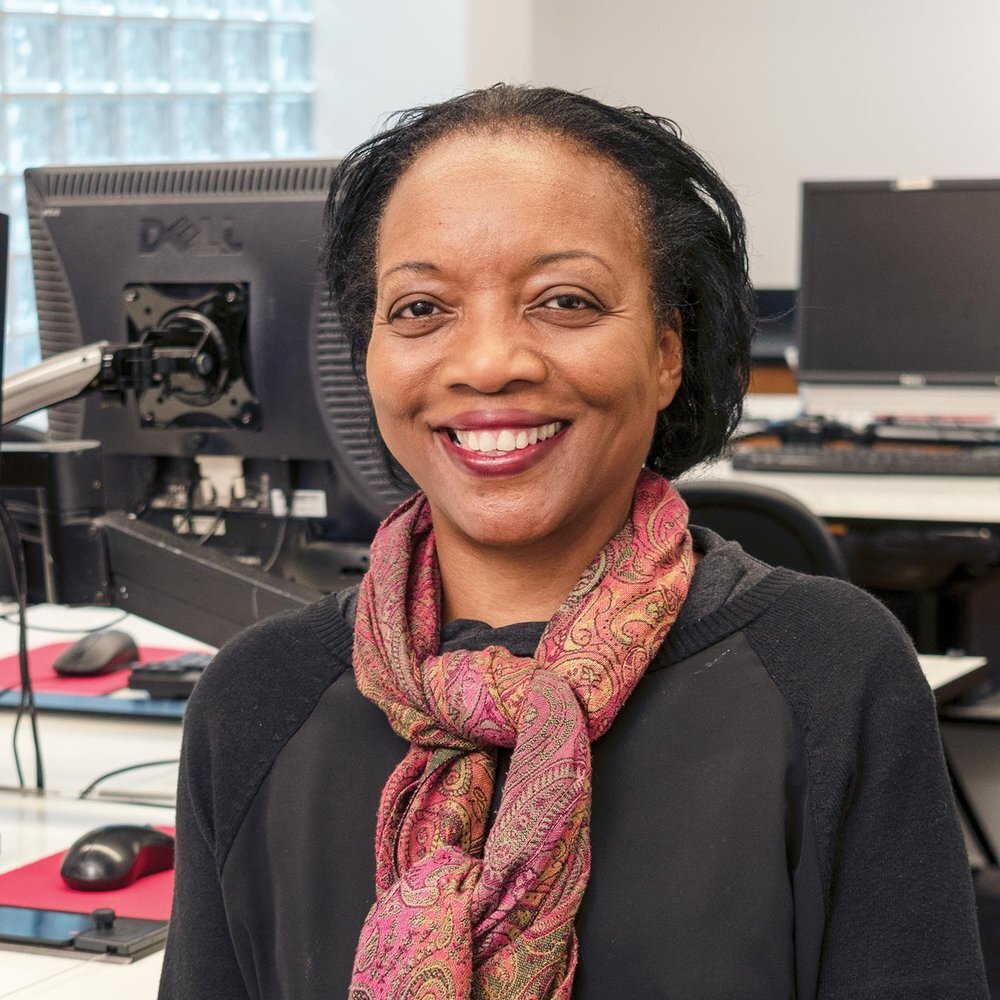Where Military Veterans Become Interior Designers. Find out what NYSID can do for you.
With an eye for detail, the decision-making skills of a leader, and the desire to make the world a better place, veterans like you make for exceptional interior designers. At NYSID, you can start with a degree program or just a course. You can learn how to design restaurants, hospitals, hotels, and, of course, facilities specifically for veterans.
All it takes to get started is to request information. After you've done that, read about these three inspiring NYSID veterans and picture yourself in their shoes.
Ready to Start Your Application?
Visit Apply Now.
Amy Richards, MFA1
Shane Curnutt, BFA
Mamie Rochelle, AAS
Three Veterans Are Designing Their Futures at NYSID
The New York School of Interior Design attracts career-changers as students. They bring a wealth of perspectives to the classroom, experience that informs the way they approach the built environment. This is particularly apparent in the stories of NYSID’s veterans. Nine veterans are studying at NYSID in 2018 through the GI Bill and other armed services programs. These students have overcome obstacles to study what they love: interior design. Here are just a few of their stories.
Amy Richards
Evoking The Opposite of Institutional
Amy spent a lot of time in institutional buildings during her nine years as a Logistics Manager in the US Army. Her job was to oversee shipments coming in and out of Army “shops,” enormous warehouses containing supplies and parts. She worked in South Korea and later in Hawaii. Amy was effective at her job, but she had always loved color, design, and restaurants, and she yearned to use her creativity. When she retired from the Army in 2013, she got a BA in Hospitality from DeVry University and a certification from the Institute of Culinary Education. During this process, she stumbled on what she really wanted to do, hospitality design, so she set out to find what she calls “the best school for interior design, the New York School of Interior Design.”
For Amy, the joy of the design process is creating spaces that produce the opposite effect of all the institutional buildings she encountered in the army. “A lot of the places we live and work in in the Army aren’t the nicest places: bases, barracks, hospitals, what I call brown and green buildings. I want to make spaces that make people feel embraced.” Amy, currently in the third year of her MFA-1 program, has just started her thesis preparation. She says her thesis advisor, Terry Kleinberg, R.A., is helping her ground her vision with constructive criticism. Though she’s only in the brainstorming and research phase, Amy hopes to design a “Marijuana Speakeasy” for her final project because, she says, “I think this is where hospitality design is going as laws change, and I’m intrigued by the idea of creating lushness and comfort in my designs.”
Amy has two children, and she says it’s been a big challenge to do her MFA and parent at the same time, but she feels it’s been worth it. She says, “I’ve been taught by professionals. I’ve been exposed to the latest technology. All of this makes me feel confident as I go out into the industry.”
Shane Curnutt
A Cyber Intelligence Specialist Follows His Dream
The son of an Air Force Senior Master Sergeant, Shane was born into a military family and spent his childhood moving all over the world and living on military bases. He enlisted at the age of 21, following his father’s footsteps into the US Air Force. He became a Network Operations Technician for the Air Force and for his first mission in 2009, was tasked to the 56th Communications Squadron at Luke Air Force Base in West Phoenix, Arizona. He also served on missions in South Korea, Afghanistan, Germany, Texas, and Kyrgyzstan. He says his most meaningful mission was his eight month deployment to Afghanistan, for which he earned the Afghanistan Campaign Medal (with one Gold Star) and the Global War on Terrorism Service Medal.
Shane was successful in the military. The outcomes of his IT work made him proud, but the work itself left him dissatisfied. He was good at math and computer engineering, but had always preferred creative pursuits. He says, “Even when I was in the military, I volunteered for extra work duty to do beautification. I got the most enjoyment from rearranging the office furniture.” After eight years in the Air Force, he began the separation process. He Googled “interior design,” and the New York School of Interior Design came up. He says, “Everything is set up for you in the military, so not knowing how I was going to make a living was terrifying, but then I thought about something my grandfather Mack Ferrick, a marine, told me. He said, ‘Find something you love to do; get paid to do it; and you’ll never work a day in your life.’”
Shane took the leap in 2017 and has never looked back. He says that NYSID Registrar (and VA Certifying Official) Jennifer Melendez guided him every step of the way. He started with the BID certificate program and is now in his second year of the BFA program. He says, “NYSID has far exceeded my expectations. It’s intense in the best way.” He loved his Residential II studio with Margaret Mintz and identified the Wounded Warrior Foundation project (which all BFA students complete in Residential Design II) as one of the most meaningful experiences of his studies. He says, “I created a residential design for a person I actually know, an amputee who was the first vet wounded in Iraq. I was able to ask him what he wanted. What he loved was the adaptable kitchen. My goal was to help him forget about his injury while in his home and just live his life.”
Mamie Rochelle
Designing with an Eye to Serving Veterans
Mamie says, “Men and women are sent overseas daily to defend the values of the United States. Less than 1% of the country serves in the military, and those people and their families are the ones who pay attention to what’s going on with servicemen and veterans. I’m part of that 1%.”
Mamie didn’t start out in the military. She received an MS in Collaborative Teaching from the University of Alabama and taught as her first career. She found her way to a twenty-year career in the Army through the ROTC program. Mamie’s formal designation in the Army was “Administrative Officer,” but in practice she functioned as a training officer, preparing members of the service before they were shipped off to missions all over the world. Mamie was sent to many parts of the Continental US to train. Since her hobbies have always been antiquing and decorating, she treated each new post as an opportunity to scout out regional antique dealers.
Mamie retired from the army in 2017. As she was transitioning, she knew she wanted to do something entirely different. She also knew she had to live near Tuscaloosa, Alabama, so she could care for her mother, who suffers from dementia. She already has two degrees, so she wanted a focused program. She adds, “The VA has a rating instrument for how veteran friendly schools are, and NYSID has a very high ranking.” She wouldn’t let geography be a barrier. She worked out a system to do the majority of her degree online, but planned to take some classes on campus so she could have the benefit of face-to-face interaction with faculty.
Mamie has loved her online courses in the history of design, specifically Historical Styles I and II and Modern Architecture & Design. She says, “I’ve learned so much about motifs, ornaments, and architectural facades. My teacher Warren Ashworth brings real-world knowledge of the projects he’s done into his lectures.” Mamie is headed to Chicago this semester for a weekend course in architectural photography, and to New York City for an Adobe InDesign class at NYSID’s Upper East Side location.
Her ultimate goal is to use her passion for design to better the lives of veterans. She says, “I’d like to work with the Veterans’ Administration to improve the buildings veterans receive services in. I want to update buildings so wounded veterans can go through front entrances. I have a dream to design a patriotic restaurant that honors veterans in one of those buildings. Imagine that!”
Request More Information
Find out why New York School of Interior Design is the perfect place to take classes or earn your degree.







